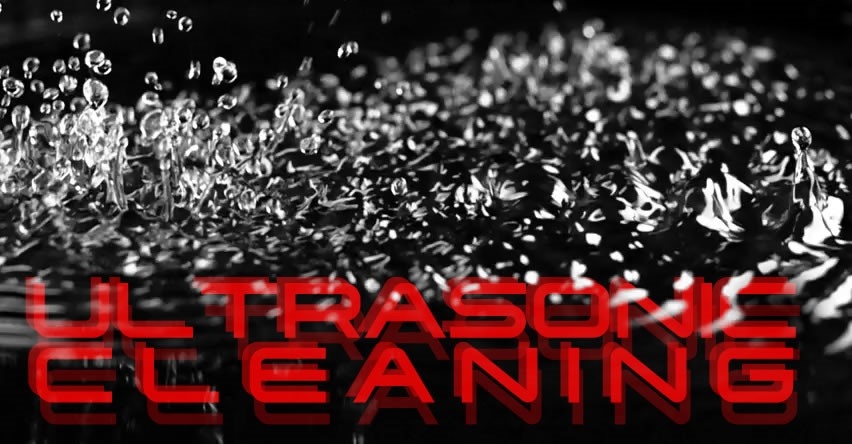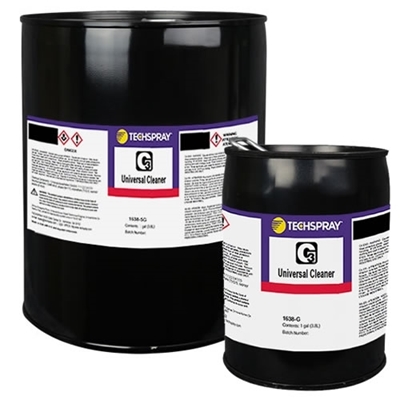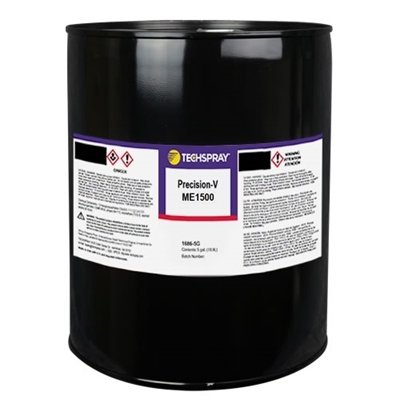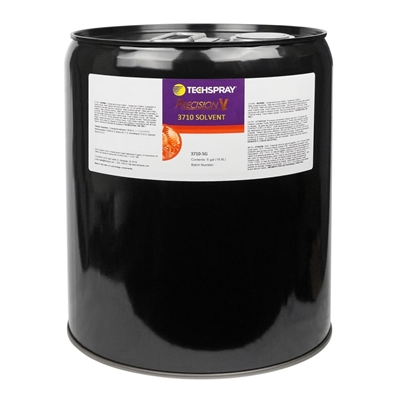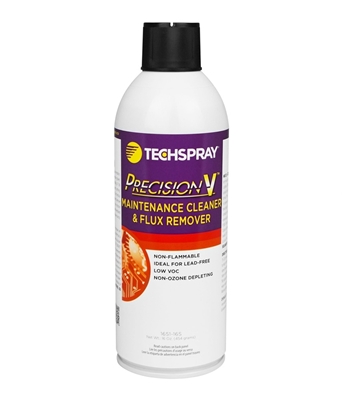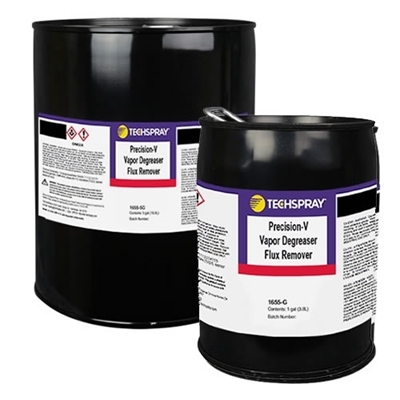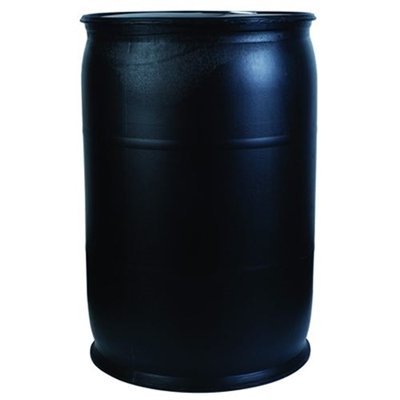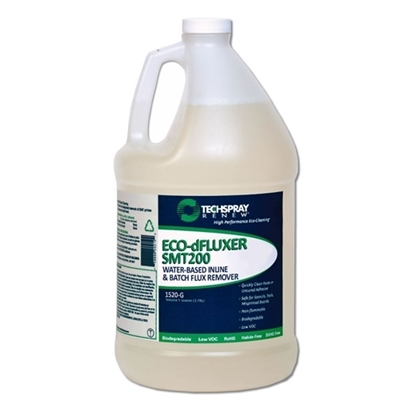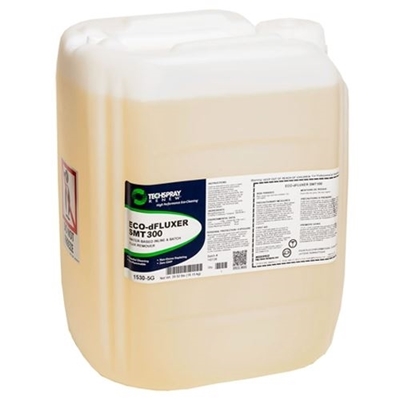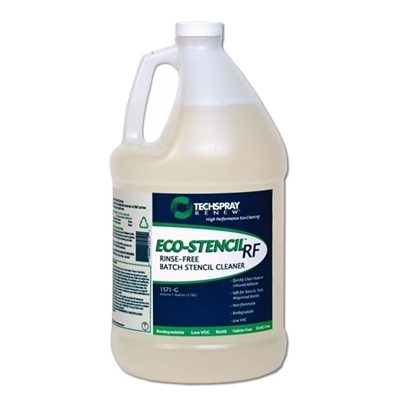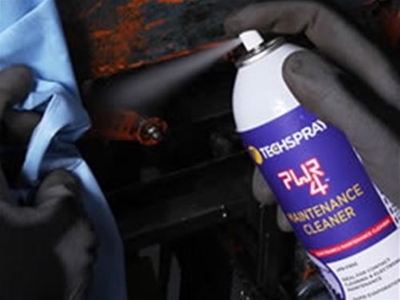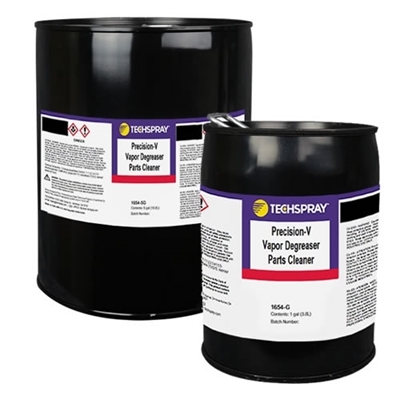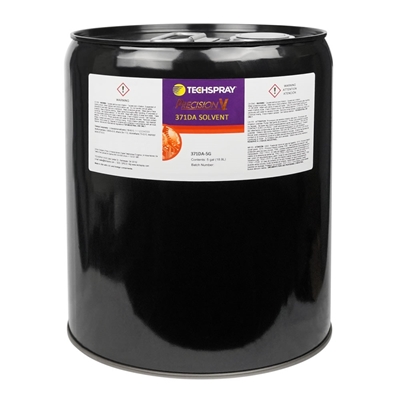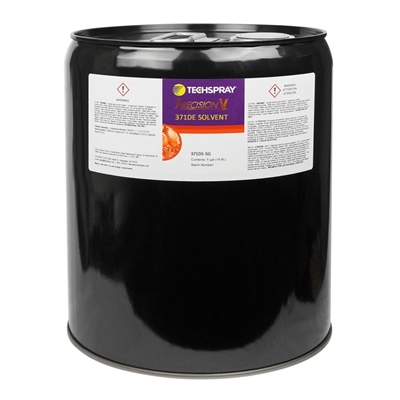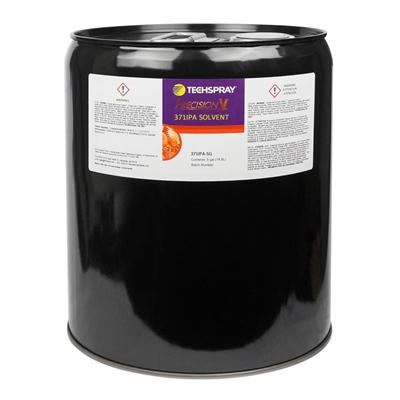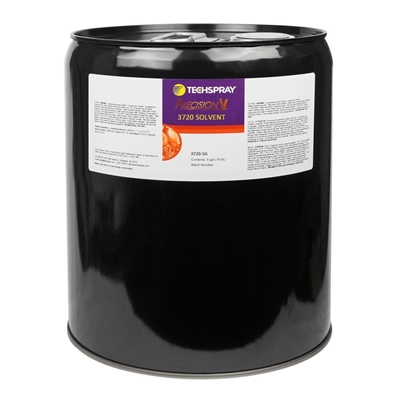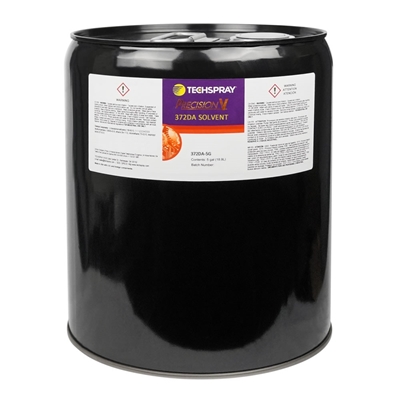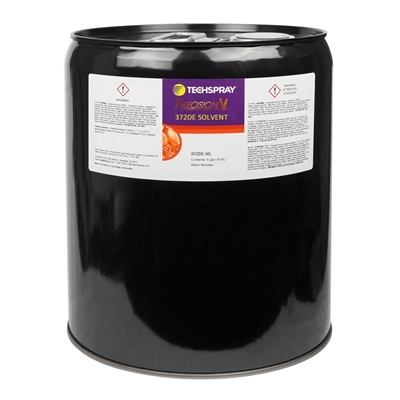When you are removing tough soils like baked-on flux residues or heavy industrial greases, you could have one of the strongest solvent cleaners in the world (like those offered by Techspray), but you would still need to implement some kind of agitation in order to achieve optimal cleanliness. You can brush, wipe, and use all manner of elbow grease, but none of that will get the job done faster and more consistently than ultrasonic cleaning.
Ultrasonic cleaning uses equipment to send ultrasound, generally between 20-40 kHZ (but can go much higher) to create cavitation within the soil, which immediately collapses into high energy, mini-implosions. These implosions break apart the fluxes, heavy greases, waxy corrosion inhibitors, and other tenacious contamination, allowing them to flow off the part and into the cleaning solution.
Equipment manufacturers include Crest Ultrasonics, Branson Ultrasonics, Graymills Parts Washers, Zenith Ultrasonics, Blackstone-NEY Ultrasonics, ESMA Ultrasonic Cleaners, Ultrasonic Power, and Pro Ultrasonics. Units can range from smaller benchtop jewelry-type cleaners (with small, low performing transducers to match) to larger industrial models.
How Does Ultrasonic Equipment Work?
Ultrasonic equipment generally consists of a tank or chamber that holds the liquid cleaner, and built-in transducers that send sound waves through the chamber. Parts to be cleaned are sometimes placed directly into the chamber, or held in a basket for easier submersion and removal. The equipment may have a heating element built in to increase the temperature of the cleaner for greater cleaning ability. Controls may be available to change the strength (amplitude, wave height) of the sonics, change the temperature, or set a shut-off timer.
The transducers send sound waves through the liquid cleaner, which acts as a transfer medium from the transducers to the parts. At very high frequencies, the waves may pass over the surface of the parts, creating agitation through a process called acoustic streaming.
As the frequency is reduced, it creates cavitation, or micro-voids within the liquid. These voids collapse on themselves as quickly as they appear, converting the potential energy to heat and shock waves. Imagine all of this occurring on the surface of the soil, and penetrating deeper as the cleaner and energy from the cavitation bubbles break it down.
As you move down the frequency range, the cavitation bubbles are larger and transfer more energy to the soil, so more heat and agitation. That can lead to more aggressive cleaning, and unfortunately, more potential to damage sensitive parts and surfaces. In contrast, the smaller cavitation bubbles at higher frequencies can penetrate into tighter surface areas and are less likely to cause damage to the parts. Cleaning action may not be as aggressive, so a higher temperature or a longer time may be needed for adequate cleaning.
Are There Pitfalls or Disadvantages to Using an Ultrasonic Process?
Like any kind of physical agitation, an ultrasonic process can cause damage to delicate parts and surfaces. Electronics, ceramic-based components, microelectromechanical systems (MEMS) like gyroscopes, accelerometers, and microphones are of particular concern.
Lower frequency sonics have more potential to cause damage than higher frequency sonics. It is helpful to think of sonics like coarse-grade sandpaper (low frequency) versus fine sandpaper (high frequency). Coarse sandpaper will make faster work of removing material, but is more likely to damage what’s underneath.
Another disadvantage in ultrasonic cleaning is the potential for cross-contamination. The instant that soil is removed from a part, the cleaning solution is contaminated, creating the potential for dissolved soil to redeposit itself onto parts. The risk of cross-contamination can be reduced with a final rinse or a pass through the vapor zone of a vapor degreaser, if the ultrasonic chamber is a part of vapor degreasing equipment.
How Can You Optimize Cleaning Performance In an Ultrasonic Process?
There are several factors that can be adjusted, which can impact the overall cleaning performance of the ultrasonic process. These often come with trade-offs, so finding the balance between these factors will lead to a process that is optimized to your requirements.
- Frequency – This is the number of waves which occur in a given amount of time (usually per second). In other words, frequency tells us how “tight” the waveform is. Higher frequencies can be associated with higher pitches (how you hear them), and lower frequencies with lower, bass pitches. Lower frequencies provide more aggressive cleaning, but introduce more potential of damaging sensitive surfaces and components. High frequency sonic waves can penetrate into tighter areas. As you get over 400 kHz, in the megasonic range, bubble collapse is not as violent due to smaller spacing, so cleaning can be less effective in tight areas.
- Amplitude – This is the height of the wave, or the loudness. As you would expect, greater amplitude will generally increase cleaning effectiveness, but will also increase the potential for damage to delicate surfaces and components.
- Temperature – Increasing the temperature generally increases the solvency of the cleaner, allowing it to break down the soil more readily. Higher temperatures can also reduce the viscosity of the cleaner and increase the surface tension, allowing it to get into tighter areas than it could have accessed at room temperature. If the temperature approaches the melting point of the soil, cleaning performance increases considerably.
- Time – Time is generally the easiest variable to adjust, so the other factors are tested and optimized in normal or average conditions, and the amount of time is increased if additional cleaning performance is needed.
- Chemistry – For tough soils, rarely does the chemistry do all the cleaning without additional agitation. That being said, the better the chemistry cleans, the less time and abuse the parts will go through as they run through the cleaning process. For a quick evaluation of cleaning ability, separate from all the other variables, you can check static cleaning. Place a drop of cleaner directly on the soiled part, let it sit for a few minutes, and then blot it dry. From this simple test, you can generally tell if the chemistry is a good match to the soil, or if you will have to overcome the lack of solvency with the sonics, elevated temperature, and additional time.
How Does the Choice of Cleaner Affect Cleaning Performance?
All of the mechanical agitation produced by the ultrasonic equipment exists to supplement the cleaning ability of the solvent or water-based chemistry. The greater the natural cleaning performance of chemistry, the more you can dial back on the sonics, temperatures, and times.
- Solvency – This is the ability of the cleaner to breakdown and dissolve the soil. For a quick evaluation of solvency, place a drop of cleaner directly on the soiled part, let it sit for a few minutes, and then blot it dry. From this simple test, you can generally tell if the chemistry is a good match to the soil. If the cleaner just sits on the surface of the soil, and doesn’t wet and start to break down the soil, move on to another cleaner. Trying to overcome a mismatch between the cleaner and soil will just lead to an elaborate cleaning process that takes too long, and is overly abusive on the parts you are trying to clean.
- Surface tension – Surface tension of a cleaner impacts how well it can get into tight areas. Picture a water droplet on a freshly waxed car. The water forms a dome. Imagine getting that dome into and out of a tight area for rinsing. The higher the surface tension, the bigger the dome - lower surface tension cleaners lay flatter. For water-based cleaners, surfactants are added to lower the naturally high surface tension of water. Solvents may naturally have lower surface tension, or the surface tension may increase depending on the percentage water in a water miscible solvent like isopropyl alcohol (IPA).
- Density – Density is not generally much of a concern, but could have a minor impact on how quickly the sonic waves travel through the liquid, and the amount of cavitation that they are able to induce. A higher density material requires more energy to move, so it could deplete the energy, (cleaning power) transferred from the transducers.
Are There Other Factors I Need To Consider When Choosing a Cleaner?
Life would be so much easier if all we had to worry about is cleaning performance. In reality, other factors can plan a part in deciding whether or not a cleaning chemistry is a good fit for both the process and the organization:
- Flammability – Narrow your selection down to a nonflammable cleaner to prevent flammable vapors from accumulating or propagating. Techspray offers three brand names of nonflammable solvents: G3, PWR-4, and Precision-V.
- Toxicity - Techspray offers innovative solvents that are much safer than the four most common industrial solvents: TCE, nPB, Perc, and Methylene Chloride and, can quickly clean the most difficult greases and fluxes. None of Techspray ultrasonic cleaners contain these highly toxic solvents, and PWR-4 was specifically engineered as a replacement.
- Rinsing – The advantage of using a 100% volatile solvent is that it will evaporate off the part cleanly, without leaving residue, so rinsing is generally optional. As more soil is dissolved into the solvent, cross-contaminating residue may be left behind after the solvent evaporates. If that becomes an issue, you will need to either change out the solvent for fresh material more often, or include a rinsing process. Water-based degreasers utilize water as the primary solvent, but they also use detergents, pH modifiers, builders, chelating agents, and a variety of other compounds. When these other compounds are used, water-based cleaners can vary in strength from aggressive to mild, and can vary in safety from dangerous to relatively nontoxic, but they usually require a rinse step. Many of the additives will not evaporate with the water, so the part may need to be rinsed for more critical applications where the residues can cause either corrosion or other down-stream contamination issues.
- Environmental issues - In the past, ozone depletion was a concern with contact cleaners containing chlorofluorocarbons (CFCs) like the Freon of old, and hydrochlorofluorocarbons (HCFCs) like AK-225. Since those solvents are no longer available on the commercial market in North America, concerns have turned to volatile organic compounds (VOCs), solvents that add to smog, or solvents with high global warming potential (GWP). Some state (e.g. CARB or California Air Review Board), municipal, and even industry-specific regulations restrict the use of high VOC or high GWP materials.
--------------------
Techspray offers a variety of solvent and water-based ultrasonic cleaners. An efficient ultrasonic cleaner is designed to work in a variety of applications such as electronics cleaning, industrial cleaning, machinery, and much more.
- Techspray Renew - Water-based flux removers with zero GWP and low VOC.
- PWR-4 – Cost effective, nonflammable, and low toxicity, making it the ideal replacement for products which contain n-propyl bromide (nPB) and other toxic industrial solvents.
- G3 - a Top-selling nonflammable solvent that’s effective on the broadest array of soils.
- Precision-V – Nonflammable replacement for AK225, and ideal for aviation, aerospace, medical, and military applications.
Techspray’s lab is available to help you qualify products, establish cleaning procedures, and diagnose cleaning issues. For more information, visit our dedicated ultrasonic cleaners page or call 800-858-4043.
For a demonstration video of ultrasonic cleaning in action, go to Ultrasonic Cleaning Demo & Overview.

